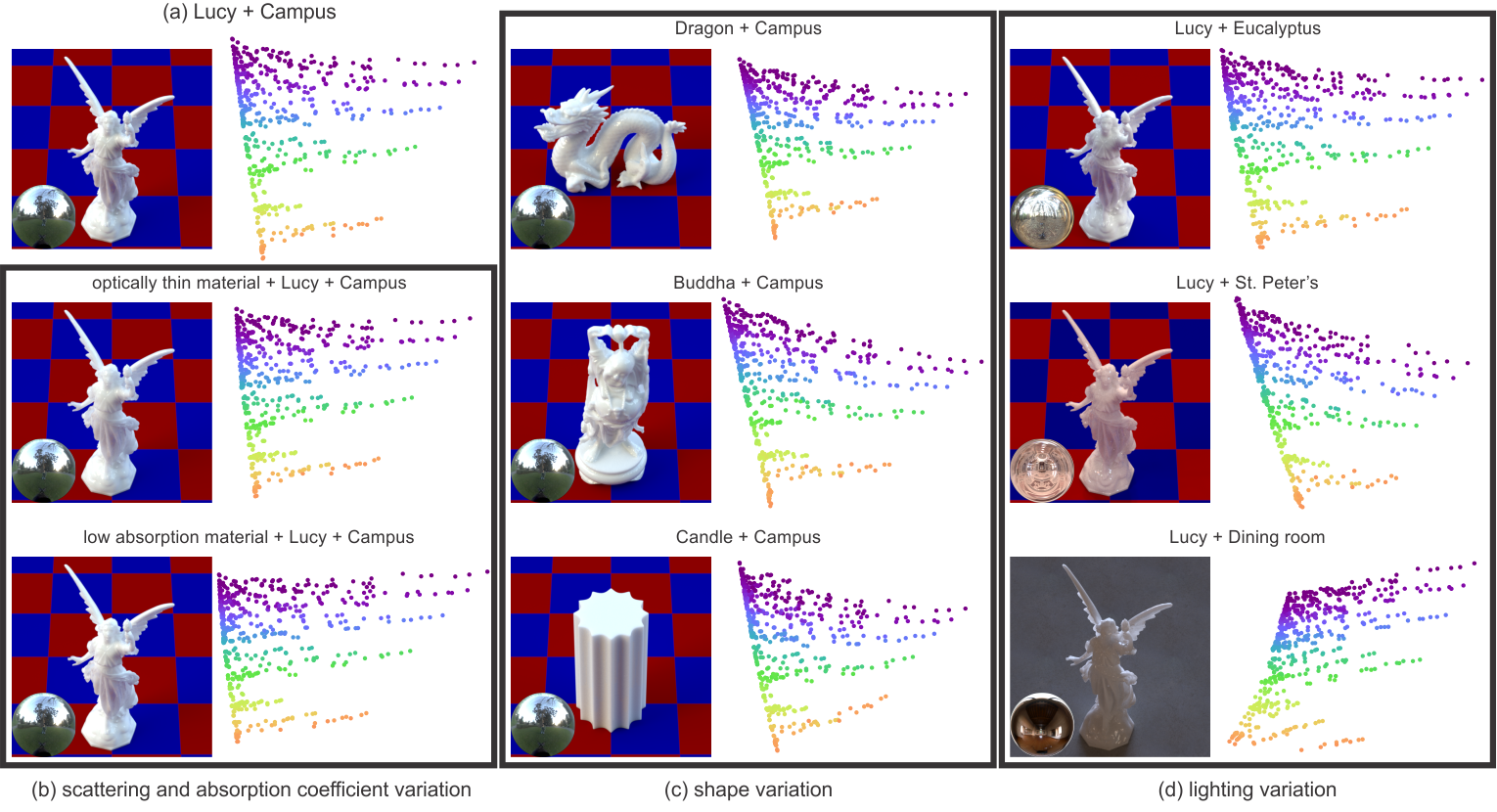Understanding the Role of Phase Function in Translucent Appearance
Ioannis Gkioulekas Bei Xiao Shuang Zhao Edward H. Adelson Todd Zickler Kavita Bala

Abstract: Multiple scattering contributes critically to the characteristic translucent appearance of food, liquids, skin, and crystals; but little is known about how it is perceived by human observers. This paper explores the perception of translucency by studying the image effects of variations in one factor of multiple scattering: the phase function. We consider an expanded space of phase functions created by linear combinations of Henyey-Greenstein and von Mises-Fisher lobes, and we study this physical parameter space using computational data analysis and psychophysics. Our study identifies a two-dimensional embedding of the physical scattering parameters in a perceptually-meaningful appearance space. Through our analysis of this space, we find uniform parameterizations of its two axes by analytical expressions of moments of the phase function, and provide an intuitive characterization of the visual effects that can be achieved at different parts of it. We show that our expansion of the space of phase functions enlarges the range of achievable translucent appearance compared to traditional single-parameter phase function models. Our findings highlight the important role phase function can have in controlling translucent appearance, and provide tools for manipulating its effect in material design applications.
Publication
Ioannis Gkioulekas, Bei Xiao, Shuang Zhao, Edward H. Adelson, Todd Zickler, and Kavita Bala, "Understanding the Role of Phase Function in Translucent Appearance", ACM Transactions on Graphics (TOG), 2013. [pdf] [bibtex] [supplementary material] [SIGGRAPH 2013 slides]
Datasets
Filename format: This document describes the filename format used by the datasets below. [pdf]
Complete image datasets: This is the set of image files we used to produce Figures 4 and 5 of the paper. All files are in the OpenEXR format for HDR images. The following archive includes 11920 files, 1192 for each scene (including the artificial cube scene from the supplementary material). [zip]
Psychophysical experiments stimulus images: This is the set of image files we used to produce Figures 7 and 8 of the paper. Images are provided in both HDR (OpenEXR) and PNG format, where for the second they are tonemapped as in the experiments described in the paper. There are 40 different images for each scene (sidelighting and frontlighting) and each format. [zip]
Code
All results in this paper were produced using customized phase function plugins built on top of version 0.3.1 of the Mitsuba physically based renderer. We provide these plugins and the corresponding scene files. [plugins.zip] [scenes.zip]